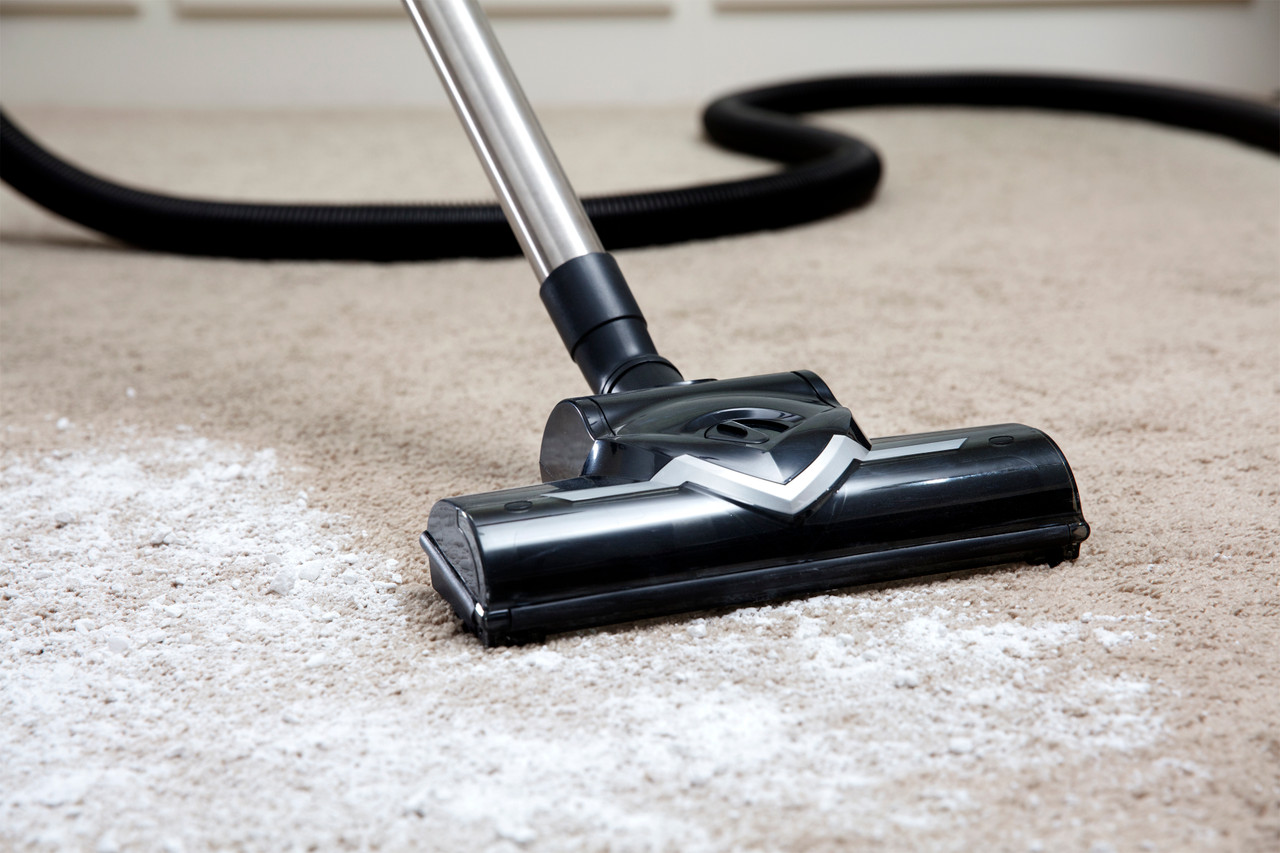Fleas will bite you, your pets, and anyone else that comes into your home, leaving you itchy and uncomfortable in your own home. These annoying pests also multiply quickly, so if you don’t act quickly, you will end up with a huge infestation within a short period.
Typically, fleas get inside your house through your pets. However, that won’t matter once they get in because they will quickly spread throughout your home. Your only move is to eliminate and keep them out, which requires a solid plan.
What Are Fleas?
Fleas are tiny, wingless, parasitic insects that consume their host’s blood. Fleas have evolved specifically to live on the bodies of their hosts and are highly adapted to their parasitic lifestyle.
If you find a flea in your home, it is likely the cat flea species that infests cats, dogs, humans, and other animals. However, there are other flea species, albeit less common.
Regarding appearance, fleas have a laterally flattened body which isn’t for aesthetics but instead serves an important purpose- it lets fleas move through the host feathers or fur easily.
Related Posts:
- Will just water and dish soap kill fleas on a carpet?
- Does dawn dish soap kill fleas?
- Does Baking Soda Kill Fleas?
They also have long, powerful hind legs adapted for jumping, allowing them to leap impressive distances relative to their size.
These annoying pests undergo four life stages- egg, larva, pupa, and adult. Adult female fleas lay eggs on their host, but the eggs fall off into the environment as they aren’t attached to the body of the host.
The eggs become larvae, which consume organic debris found in their surroundings, such as the feces of adult fleas.
After going through several developmental stages, the larvae reach the pupal stage. The pupae can remain dormant until a potential host comes along. Once a suitable host is nearby, the adult flea emerges from its cocoon and jumps onto the host to feed on blood.
If a flea bites you, it will leave you itchy and irritated, causing you to scratch excessively and even cause secondary skin infections. If bitten, your pets can also develop an allergic reaction to flea saliva, resulting in severe itching and discomfort.
Additionally, fleas can transmit diseases to animals and humans, including Bartonella (cat scratch fever) and certain types of tapeworms.
Read More:
Signs Of Fleas In House
Do you suspect fleas are inside your home? These signs will help you confirm whether these pesky parasites are inside your home.
a) Bites and Excessive Itching
Are you or your pets experiencing unexplained bites and persistent itching? You may be dealing with fleas. Flea bites often cause itchy red bumps, typically on the lower legs or ankles.
b) Pets Scratching Excessively
Seeing your pets scratching themselves may not be unusual but do not ignore it if they start scratching excessively. Pets are common hosts for fleas. If fleas infest your pets, they may exhibit excessive scratching, biting, or fur licking.
c) Flea Dirt
Fleas can leave flea dirt on your pet’s skin and bedding, carpets, furniture, and other places you are likely to find fleas. Flea dirt resembles black specks or small dark grains similar to pepper or finely ground coffee. It consists of flea feces and is composed of digested blood.
It is easy to confuse flea dirt with regular dirt. To differentiate them, place it on a paper towel, then add a couple of drops of water. It is likely flea dirt if it turns reddish-brown since it contains digested blood.
d) Fleas On Your Pet
Confirming a flea infestation may be as easy as seeing them on your pets. Therefore, check your pets carefully, especially behind the ears, around the neck, and at the base of the tail because fleas usually hide in these areas.
Look for live fleas moving through your pet’s fur. You may also notice their small, dark-brown or reddish bodies.
e) Fleas In The Environment
Fleas don’t stay solely on pets; they can also infest your home. Therefore, after inspecting your pets, look for signs of adult fleas hopping on carpets, rugs, or furniture. Pay close attention to areas your pets rest or sleep.
f) Flea Eggs And Larvae
Sightings of flea eggs and larvae can also confirm these parasites’ presence. Fleas lay small, white eggs. Unfortunately, they are difficult to spot. However, you might see them in your pet’s bedding or the cracks and crevices of floors or furniture.
Flea larvae are tiny, worm-like creatures that prefer dark, humid areas such as carpet fibers or pet bedding.
How To Get Rid Of Fleas In House
Controlling fleas requires a multi-faceted approach that includes treating affected animals. You must also address the flea population in the surrounding environment.
You cannot just deal with adult fleas without eliminating the eggs and larvae because they will just grow into adult fleas.
Let’s address fleas in your house in stages, starting with the pets, the house, and then the environment.
1. Get Rid of Fleas On Pets
Before washing your pets, brush the fur using a flea comb because it will pull out 60% of the fleas on your pets. Therefore, run this comb through the fur of your pet, focusing on its tail base and the back of its neck.
Related Post: How To Get Rid Of Fleas On Cats
Run warm water on your pet’s fur, then apply regular shampoo or dog fleas control shampoo for eliminating fleas deep into its fur. Do this thoroughly to ensure you get rid of most fleas. Shampooing your pets will also remove dried blood and skin flakes young fleas consume.
Getting your pets a flea medication helps eliminate fleas and keep larvae from maturing. Therefore, call your veterinarian for a prescription.
2. Vacuum Your House
Do not skip this step because it is absolutely essential; it helps remove adult fleas, eggs, and larvae from carpets, rugs, and other surfaces. Before vacuuming, clear the floor of any objects, such as toys, clothes, or clutter, that may obstruct the vacuum cleaner’s path.
You must also choose your vacuum wisely because some types do a better job eliminating fleas than others. With that in mind, a vacuum cleaner that has a rotating brush should be your first choice.
Also, ensure it has a strong suction and preferably a HEPA filter since it can trap smaller particles like flea eggs and debris.
Start by vacuuming the areas frequented by your pets, such as carpets, rugs, and upholstery. Pay special attention to areas near furniture, baseboards, and cracks and crevices where fleas and eggs can hide.
Don’t forget to vacuum underneath furniture and along the edges of the rooms. Vacuum slowly and thoroughly over each area, making multiple passes in different directions to ensure the vacuum cleaner effectively sucks up fleas, eggs, larvae, and debris.
Disposal is also vital, so once you are done vacuuming, eliminate the vacuum bag promptly or empty the canister into a sealable plastic bag. This prevents live fleas, eggs, and larvae from re-infesting your home.
Note
Consider sprinkling baking soda and salt on your carpets before vacuuming because these products dehydrate fleas.
3. Steam-Clean Furniture and Carpets
Time to deal with flea eggs on your furniture and carpets. Run a steam cleaner over your furniture, carpets, and other places your pets can access. The heat will handle the larvae and flea eggs in areas the vacuum cannot reach.
Related post: Does hot water kill fleas and their eggs?
4. Wash Bedding And Fabrics

Kill flea eggs and adult fleas by washing every bedding (pet and human bedding) in hot water. Use the highest temperature setting safe for the fabric. Additionally, wash any infested clothing, curtains, and other fabric items. Dry them on high heat as well, as the heat helps to kill fleas.
5. Apply An Insectide Spray
To ensure you fully eradicate flea larvae, consider spot-treating certain parts of your house, like underneath and behind furniture, baseboard seams, and corners, with an insecticide spray.
Choose an Insect Growth Regulator (IGR) insecticide with pyriproxyfen or methoprene because they are more effective.
IGRs are child and pet-friendly and keep young fleas from maturing.
6. Repel Fleas With Rosemary
The pungent smell of rosemary repels fleas. So, boil rosemary and water in a pan, let it cool, then transfer the rosemary water into a spray bottle. After that, spray it around your home and even your pet’s fur to keep fleas at bay.
7. Treat Outdoor Spaces
If you let fleas thrive outdoors, they will eventually find their way inside your home even after working hard to ensure your house is free of fleas. Therefore, you must treat your outdoor spaces as well.
This work entails mowing your lawn regularly, removing debris where fleas can hide, and using flea control products such as insecticides or nematodes in your yard.
8. Repeat Treatments
As you know, fleas are persistent little creatures, so it may take multiple treatments to eradicate them. Therefore, follow up with continued pet treatments, vacuuming, and cleaning protocols. Repeat them if necessary.
Conclusion
When fleas strike, nobody is comfortable. Luckily, there are plenty of techniques and tools to deal with these pests. The steps discussed above will ensure you kill the fleas in your home and even keep them from coming back.

I’m Mike Hyle, an exterminator with 7+ years of experience handling all sorts of pests, including mice, cockroaches, bed bugs, and termites. I also write for Pest Solutions DIY blog to share my knowledge and help homeowners keep their homes pest-free. Outside work, I enjoy hunting, snowshoeing, and exploring nature. Check out my blog for helpful pest control tips!



